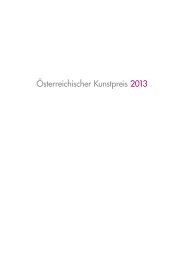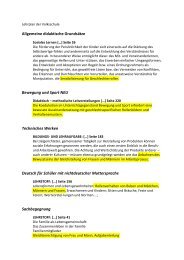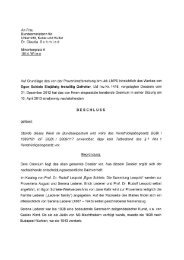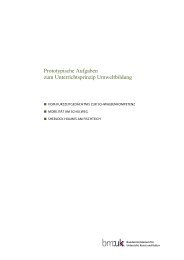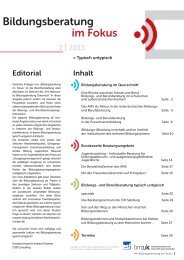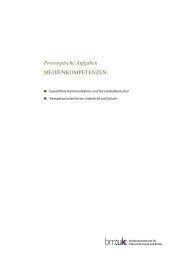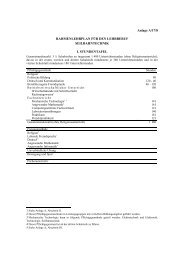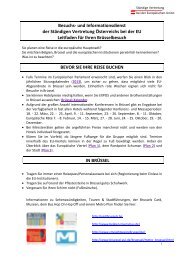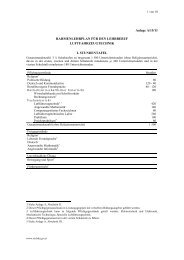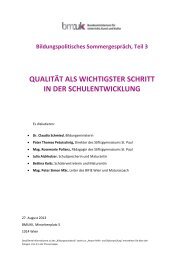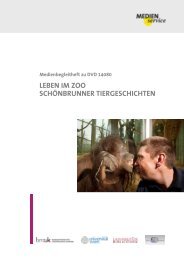Innovative Film Austria 12/13
Innovative Film Austria 12/13
Innovative Film Austria 12/13
Create successful ePaper yourself
Turn your PDF publications into a flip-book with our unique Google optimized e-Paper software.
limits. Another example of the deliberate exploration of images and sound in the<br />
digital age is Michael Palm’s feature-length film essay, Low Definition Control –<br />
Malfunctions #0. Palm’s ‘school of seeing’ focuses on computer-aided imaging<br />
devices as they are used in urban non-places and in medicine, focusing on the<br />
visual appropriation of the human body in public space. Palm freely and associatively<br />
translates his subject matter into an unfinished quest. Expert voices here<br />
do not embody the truth but are placed erratically out-of-field. While the film’s<br />
main interest is in the changing technologies for measuring and monitoring urban<br />
life, it also is an option to – in a wide-screen (1:2.35) black-and-white format –<br />
present reality in a condensed form.<br />
If hybrid forms are another feature of innovation in <strong>Austria</strong>n film, this is not only<br />
true for areas where ‘realistic’ images and forms of abstraction meet but also<br />
for the zone between the given and the staged. Anja Salomonowitz, for instance,<br />
sets almost all of her films in this in-between space. Her Die 727 Tage ohne<br />
Karamo is a stylized and theatrical stock-taking of the <strong>Austria</strong>n authorities’ treatment<br />
of so-called non-EU nationals. Using alienation effects, such as the deliberate<br />
decoupling of sound and image, the film subverts identity clichés as well as<br />
the conventions of TV documentaries. Tizza Covi and Rainer Frimmel also rely on<br />
forms of theatricality. In their feature, The Shine of Day, they create ‘true’ stories<br />
by working with protagonists whose life is part of their film role.<br />
The stage here forms the basis for a dramaturgy aimed at looking behind the<br />
curtain. The encounter of a stage actor in his prime and an aging showman<br />
highlights two different practices of illusion. The veristic moments of the narration<br />
are off-camera, in the film’s empty spaces. A new space evolves in which life<br />
can be negotiated as the basis of drama.<br />
Many <strong>Austria</strong>n films that deal with social taboos are situated in the conflict<br />
between repulsion and attraction, between reason and emotion. Outing,<br />
Sebastian Meise’s and Thomas Reider’s portrait of a pedophile based on many<br />
years of research for a fiction film project, does not cater to such an esthetics<br />
of disgust. The film is not out to provoke but aimed at mobilizing a discourse on<br />
sexuality, not unlike the dispositive of a confessionary. If a documentary keeps<br />
revolving around figurations of physical materiality and actions, as in Veronika<br />
Franz’ und Severin Fiala’s Kern, the portrait of the eccentric film and theater<br />
<strong>12</strong> ><strong>13</strong> Introduction



